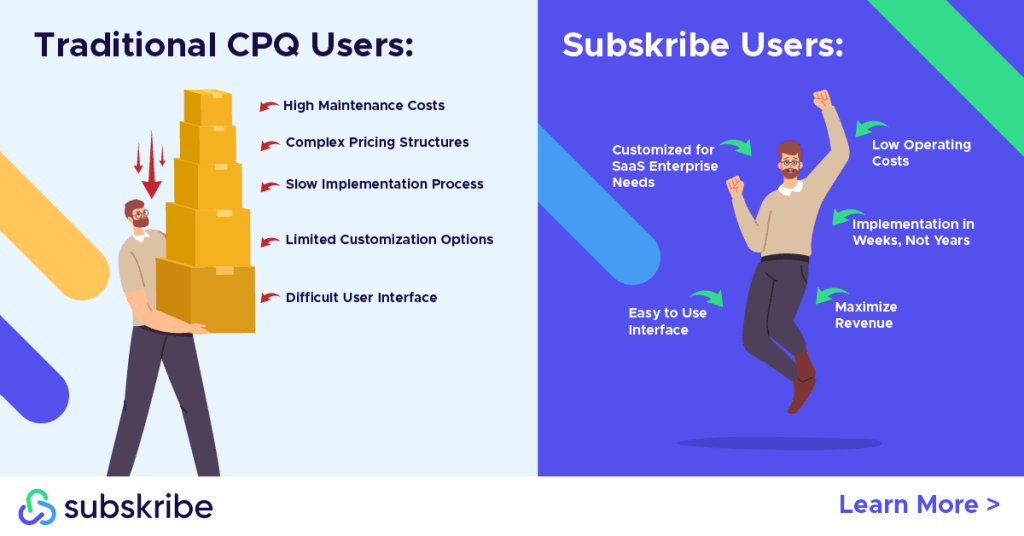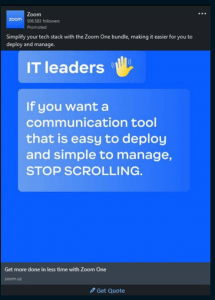In the competitive landscape of B2B SaaS startups, building a strong brand is crucial for establishing credibility, attracting customers, and differentiating yourself from the competition. A well-defined identity sets the tone for demand creation, but there is significantly more involved than just having strong brand guidelines. B2B startups should focus on the following areas as they approach marketing to cold prospects (i.e. not currently in-market) and building demand.
- Tell Exceptional Customer Stories
- Articulate Who You Serve
- Live & Breathe Your Target Audience
- Position Your Brand to Solve Pain Points
- Be Memorable
- Evolve & Adapt
- Tell Exceptional Customer Stories
Honestly, unless you’re already a big brand, a strong logo or custom domain isn’t gonna get you there – not even a big fundraising round. Closing business in B2B has little to do with visual elements – it’s about sharing the success you deliver to your customers. Focus on sharing exceptional customer success stories at every touchpoint. Market your customers’ successes and when doing so be specific (XXX increase due to YYY implementation), borrow authority (showcase big, well-known clients), and master the before and after (before customer used your product, everything was backward and upside down; after they used your product, order was restored in the world).

Articulate Who You Serve
Telling customer stories becomes easier when you know your customers. Start by reflecting on the pain points and benefits of your B2B SaaS startup. What do you address directly? Why is your product more beneficial than the status quo or a competitor? Who directly has those pain points and requires those benefits? Look at industries, job titles, regions, company size, etc. Do not be afraid of going too niche.
Audit Your Competitive Landscape
Research and analyze who your competitors call out as their audience. Are they trying to serve everyone? Do they have specific niches? Are you going to directly compete with their niche or do you have a bit of a Blue Ocean? Understanding how they position themselves helps you identify gaps or opportunities in the market. Aim to differentiate your B2B SaaS startup in your marketing efforts by defining unique benefits that resonate with your target audience and set you apart from the competition.
Develop Detailed Ideal Customer Profiles
ICPs such as job titles, responsibilities, pain points, company size, geography and internal tools help focus marketing efforts. If you typically work well with companies who have Slack or Salesforce or Jira, note that in the ICP. If your solution requires working with enterprise companies, you better focus your marketing on enterprise companies. Understand their goals and objectives, as well as any barriers they might face when considering a B2B SaaS solution. This will help you tailor your marketing messaging to address their specific needs.
Delve into analytics tools to gather insights about your core customers. Review your CRM to see what types of companies are buying your product. Talk to Sales (yes, Marketing can talk to Sales) and learn what types of companies they like working with.

Keep Your Marketing Concise
While it’s important to have a clear set of benefits and pain points, try to keep the list concise. Focus on a few that truly define your SaaS startup’s core value proposition for your target audience. Having a small set of pain areas addressed allows for easier internalization and integration across your organization. Aim for clarity and simplicity to ensure everyone can understand and embody these values.
Once you’ve defined your brand’s target audience, pain points, and benefits, it’s crucial to communicate them effectively and repeatedly. Reinforce, reinforce, reinforce. Integrate them into your brand messaging, website, and sales enablement documents. Regularly reinforce these benefits in your ads, landing pages, and white papers.
Live & Breathe Your Target Audience
Once you have identified your target audience – the core set of industries, job titles, company size, etc. – you need to become intimate with the audience. Live and breathe their culture, their work lives. Understand what makes their jobs hard, their bosses happy, and if they had a magic pocket genie, what they would wish for. Understanding your target audience is crucial for creating a strong B2B marketing that resonates with the right people. By gaining deep insights into their needs, preferences, and pain points, you can tailor your messaging, positioning, and overall strategy to effectively engage and connect with them.
“Understand what makes their jobs hard, their bosses happy, and if they had a magic pocket genie, what they would wish for.”
Conduct Market Research & Listen to Your Customers
Step one is pretty simple but necessary. Don’t skip on the info that is already available. Start by conducting comprehensive market research to gather information about your target audience. Explore industry reports, competitor analysis, and customer surveys to gain insights into their demographics, psychographics, and behaviors. Identify their specific challenges, goals, and motivations related to your B2B SaaS solution. The more data and research you have, the better you can understand your audience.
Engage in active listening with your existing customers to understand their experiences, pain points, and desired outcomes. Conduct surveys, interviews, and customer feedback sessions to gather qualitative data. Pay attention to their language, challenges, and suggestions. This not only helps you understand your current audience better but also provides insights for attracting similar customers in the future.
Conduct A/B Testing
Experiment with different messaging, visuals, and positioning to understand what resonates most with your target audience. A/B test different variations landing pages and ad campaigns to gauge audience response. This data-driven approach allows you to optimize your brand identity based on real-time feedback and engagement metrics.
Position Your Brand to Solve Pain Points
We have talked about this frequently, but let’s reiterate: we need to highlight how your B2B software company is solving your target audiences’ pain points in your marketing. Emphasize what sets your B2B SaaS startup apart from the competition. Identify the unique value proposition that makes your solution valuable for your target audience. Communicate the benefits and advantages of your product or service, focusing on the specific problems it solves and the outcomes it enables for your customers.
Showcase Customer Success Stories
We talked about this at the very beginning, customer success stories define your brand. Integrate customer success stories into your marketing. Highlight real-life examples of how your B2B SaaS solution has positively impacted businesses and helped them achieve their goals. Use these stories as testimonials that reinforce the credibility and effectiveness of your product or service, building trust and confidence in your brand. Put your customers in your ads. Front and center.
Be Memorable
Developing a distinct visual identity is essential for demand creation and capturing the attention of your target audience. Consider how you want your audience to perceive your B2B SaaS startup and align your marketing accordingly. Remember, the main goal is to align your software company with your target ICP.
Memes for the Win
Memes that capture the mood and everyday life of your target audience are a great example of marketing that connects with your ICP. Swag, podcasts, fun booths at tradeshows – all these things connect your marketing with your customers and create demand for your product.
Consistency is key when applying your visual identity. Your memes, swag, etc. should be consistent and folks need to create a memory of your brand. There is no sense creating demand if your target market forgets who you are when they are ready to buy. You need to be memorable so that your software is on the short list of companies they are considering.
Evolve and Adapt
As your B2B SaaS startup grows and the market evolves, your marketing will need adjustments. Continuously evaluate performance, gather feedback from customers, and be open to refining your target audience and your positioning. Adapt to a changing market while staying true to your solutions’ strengths.
Creating demand is a foundational step in B2B SaaS startup marketing. Don’t get sucked into focusing on guidelines and color schemes. Dive into your target market and speak their language – even if that language changes over time.
